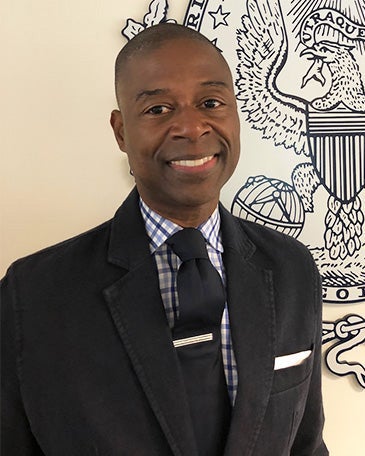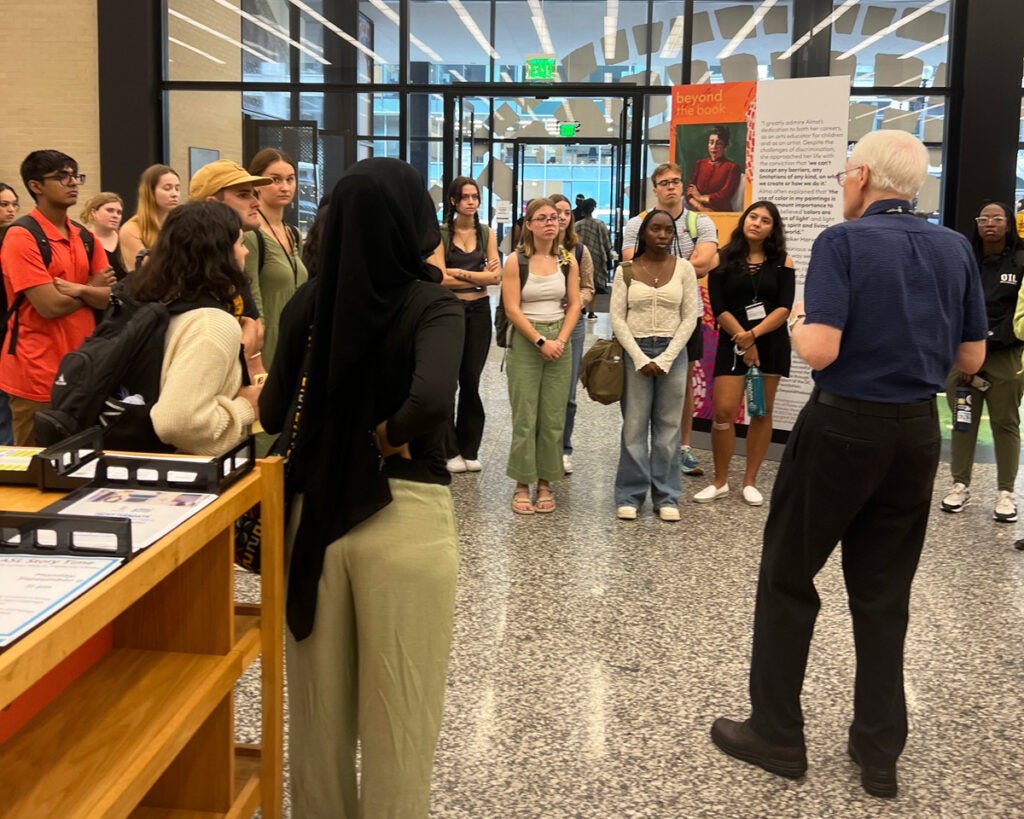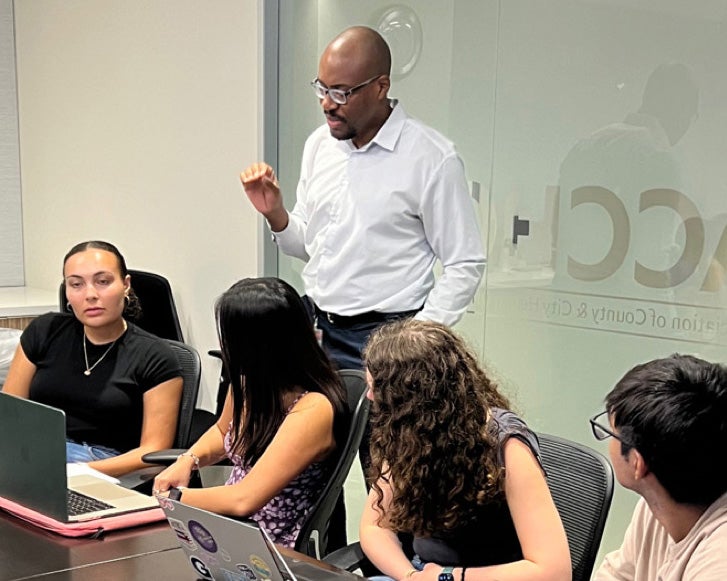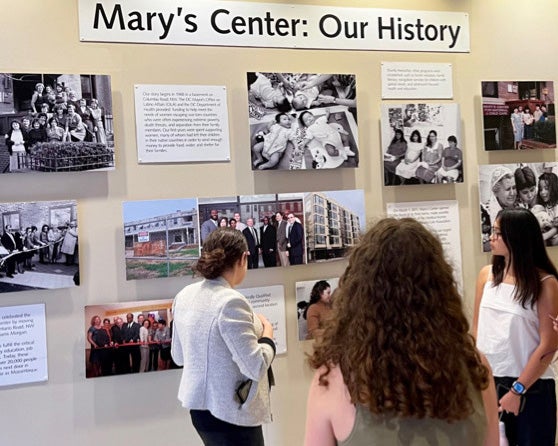Learning About Health Equity Inside and Outside the Clinic
(October 31, 2024) — A small group of undergraduate students from across Georgetown practiced interventions to improve community health as part of a unique six-week GU Capital Applied Learning Labs (CALL) experiential learning course. The School of Health sponsors the course, titled Health Equity for the Common Good.

Brian Floyd, MS
“Health equity work can be abstract, but when you interact with people in the community, negotiating barriers to care involving employment, housing and insurance, it really can ground the data,” said Brian Floyd, MS, assistant dean for academic affairs in the School of Health, who designed and taught the course. “Students were able to see the nuances of health, whether it be navigating the legal system to help address a housing concern or providing direct care through a free dental clinic.”
Through a combination of site visits and interdisciplinary discussions, the nine students learned different methods to address health equity at the local, state and federal levels, ranging from providing social services to direct care.
“Many different perspectives were brought into discussions, and students studying health care brought practical arguments I did not think of,” said Darsh Puri (SFS’28), referencing a conversation in which students discussed how cancer rates have increased despite a declining number of cancer-related deaths. “Students studying health mentioned how there’s much more testing now for cancer, which could explain the increase in rates, where I was thinking about lifestyle changes.”

Students visited Martin Luther King Jr. Memorial Library.
Georgetown students enrolled in CALL courses live and learn at the Capitol Campus in downtown Washington.
“I was looking for an opportunity to get outside the main campus area, the Georgetown bubble, and take a class that wasn’t just lecture-based but focused on meeting and learning from people in the community,” said nursing student Francyne Diola (N’27). “Most of my courses have been focused on the clinical setting, so it was great to have the opportunity to learn about health equity and what drives social determinants of health outside of the medical setting.”
In addition to weekly readings and classroom discussions, students participate in site visits at institutions throughout Washington, where they learn firsthand from policy experts and providers about best practices in addressing community health concerns.
Community Health Sites
Floyd chose five locations for the course’s on-site visits, including the Martin Luther King Jr. Memorial Library, Georgetown’s Lombardi Comprehensive Cancer Center, the National Association of County & City Health Officials (NACCHO), Georgetown’s Health Justice Alliance, and Mary’s Center.
“We started off at an unconventional place for some when thinking about health equity,” said Floyd. “The library, especially the downtown location, really serves as a hub to provide social services, such as providing training on computers for people with disabilities, to working with people in the community on their immigration documents.”

Students met with staff during their visit to NACCHO offices.
Another entry point to addressing health disparities, Floyd said, can be through national organizations such as NACCHO, which provides technical assistance for city and county public health agencies across the country.
“Visiting NACCHO’s offices and meeting with their staff also helps students think about the political determinants of health, and how officials at the local, state and federal level can affect health outcomes.”
Diola was especially impressed by Mary’s Center, a federally qualified health center that offers screenings and services regardless of a person’s ability to pay. “In addition to medical services, Mary’s Center operates with a two-generation education model, where parents can take classes for computer skills or English language skills while their child is also being taught next door,” she said. “Education plays such a huge component with employment, so teaching important skills on-site at the clinic truly represents how the work being done at Mary’s Center is holistic in every sense of the word.”
Removing Barriers
To have students think critically about the root causes of health inequities and possible alterations to systems and structures to create lasting change, Floyd asks students to pair off into groups to complete a final project investigating a particular health equity issue.

A visit to Mary’s Center, a federally qualified health center
“For our final project, we were interested in understanding barriers to reproductive health care services, as well as maternal health,” said Diola. “Our group was really struck by statistics such as 80% of pregnancy-related deaths are preventable and, on top of that, Black and American Indian/Alaska Native women are 2.5 and 3.3 times more likely to die from pregnancy-related causes compared to white women.”
To address these startling statistics, Diola’s group envisioned a holistic approach to reproductive care, from providing medically accurate sex education in schools to expanding health care coverage and improving protocols for addressing postpartum complications.
Puri hopes other SFS students enroll in the course. “Health care is such an important aspect of policy around the world, and advancements in health are not possible without including ethical considerations like the ones we consider in this course,” said Puri.
Heather Wilpone-Welborn
GUMC Communications

